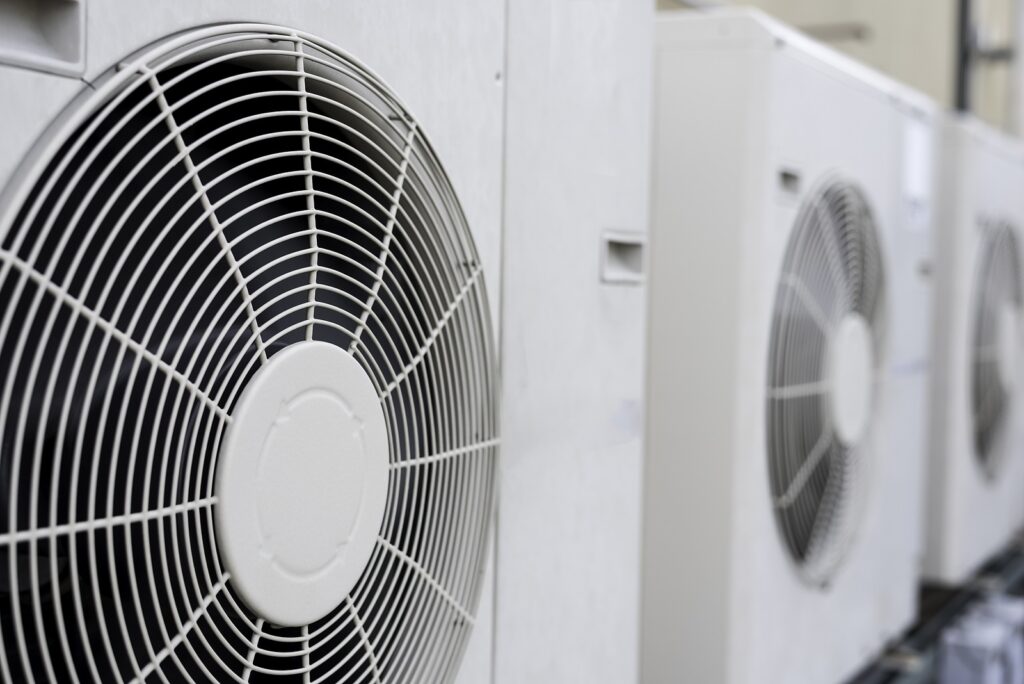Ductless Mini-Split Systems: Efficient Cooling Solutions
How much do you really know about ductless mini-split systems? If you are in the market for a new cooling system or looking to upgrade your current one, it’s important to know all of your options. And when it comes to keeping your home cool and comfortable, the choices for cooling systems seem endless.
It’s like picking the right tool for the job but on a much larger scale, given the significant cooling requirements of a house. Amidst this abundance of options, a relatively compact and extremely efficient contender has been grabbing attention: the ductless mini-split system.
If you’re a homeowner looking for a more efficient way to cool your living space, the ductless mini-split system could be a game-changer for you. With global temperatures on the rise and the associated increase in home cooling needs, finding an energy-efficient solution that doesn’t put a strain on the environment or your wallet is more critical than ever.

Why Efficient Cooling Matters
Efficient home cooling isn’t just about finding the most powerful AC unit or the one with the lowest sticker price. Air conditioning’s effects on energy consumption, indoor air quality, and the environment should not be overlooked. By choosing an efficient cooling solution, homeowners can enjoy increased comfort at home while also contributing to reducing energy consumption and greenhouse gas emissions.
How Ductless Mini-Splits Work
Understanding the inner workings of a ductless mini-split system is the first step in realizing its potential as an efficient home cooling solution.
The Science Behind the Split
A ductless mini-split system consists of two main parts: an outdoor condenser/ compressor unit and one or more indoor evaporator units. These units are connected by a conduit that carries refrigerant, power, and drainage lines. This design eliminates the need for ductwork and makes for a more modular cooling system.
Minimizing the Split
This ‘mini’ aspect refers to the reduced size of the components compared to traditional ducted systems. Mini-splits cool by moving refrigerant between the outdoor and indoor units in a continuous cycle, absorbing heat from inside the room and dissipating it outside.
Ductless vs. Ducts
The absence of ducts in mini-split systems is a significant advantage in terms of efficiency. Ducts are notorious for energy loss due to leaks and improper insulation. Ductless systems, on the other hand, can achieve nearly 100% energy efficiency, leading to lower operating costs and a lighter ecological footprint.
Advantages of Ductless Mini-Split Systems
There’s more to a ductless mini-split system than compactness and cost savings. Here’s a deeper look at their benefits over traditional units.
Energy Efficiency and Cost Savings
Ductless mini-splits are up to 30% more efficient than central AC systems. This can result in substantial savings on energy bills over time, making the initial investment worthwhile for many homeowners. The ability to control the temperature in individual rooms further enhances efficiency by avoiding overcooling of unoccupied spaces.
Flexibility in Installation and Use
One of the most attractive features of ductless systems is their flexibility. The absence of ducts means they can be installed in homes that were never intended to have central air. They’re also great for home additions or renovations, where extending or installing new ductwork can be prohibitively expensive.
Improved Air Quality
Ductless mini-splits typically feature multi-stage filtration that can significantly reduce dust, bacteria, pollen, and other allergens in the air. This can be particularly beneficial for individuals with allergies or respiratory issues, providing a healthier indoor environment.
Considerations for Homeowners
Before rushing out to buy a ductless mini-split system, consider several important factors to ensure you’re making the right choice for your home.
Sizing and Placement of Units
Proper sizing of a mini-split system is crucial for efficient and effective cooling. An HVAC professional can determine the right capacity for your home based on factors such as square footage, ceiling height, insulation levels, and local climate. Correct placement of indoor units is also important for optimal air distribution.
Maintenance and Cleaning Tips
Like all cooling systems, ductless mini-splits require regular maintenance to operate at peak efficiency. According to the manufacturer’s recommendations, filters should be cleaned or replaced, and the system should be inspected annually by a professional.
Look for Financial Incentives
Depending on where you live, rebates, tax credits, or other financial incentives may be available for installing an energy-efficient cooling system. These incentives can help offset the upfront cost and increase the system’s overall cost-effectiveness.
Ductless mini-split systems offer a convergence of efficient technology with practical advantages for homeowners. From lower energy bills to improved air quality, the reasons to consider a ductless system are abundant. If you’re in the market for a new cooling solution that’s eco-friendly and wallet-friendly, it’s high time to give mini-splits a serious look.
Best Ductless Mini-Split Systems, One Phone Call Away
In closing, upgrading your home cooling system is a significant decision. But armed with knowledge and understanding, selecting the right solution can lead to years of enjoyable, sustainable comfort in your home. If you’re ready to take the next step, contact our team today at 317-697-9265 for a consultation and to learn more about the benefits of ductless mini-split systems.

